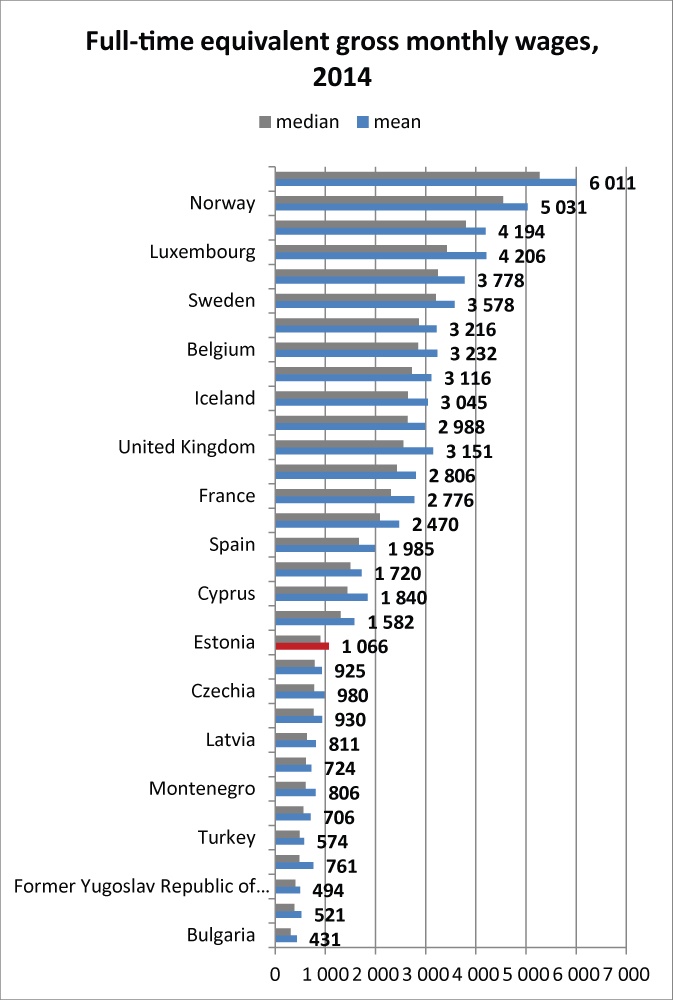Analytics, Banks, Direct Speech, Estonia, EU – Baltic States, Statistics, Wages
International Internet Magazine. Baltic States news & analytics
Saturday, 20.04.2024, 17:57
Wage growth slowed in local government administration in Estonia
 Print version
Print version |
|---|
The growth rate of gross monthly wages slowed a little,
especially in local government administration. Given that productivity declined
in the second quarter, growth in the average wage remained strong. The
Structure of Earnings survey indicates that the wage level in Estonia was
second behind that of Slovenia among the Central and East European countries in
2014
Data from Statistics
Estonia show that the average gross monthly wage was up 7.6% in the second
quarter of 2016. This is slightly slower than the yearly growth rate of 8.1% in
the previous quarter.
Wage growth slowed
most in state and local government
administration, but the trend of accelerating wage growth was noticeable in
Estonian-owned private companies. Data from the Tax and Customs Board showed
similar developments. Growth in the average declared wage paid out in the
second quarter was slightly slower than it was in the first quarter of 2016 or
the second quarter of 2015. This was because of a deceleration in the rapid
growth in wages paid out by government institutions.
The average wage is
again rising notably faster than productivity. The flash estimate from
Statistics Estonia puts GDP growth at 0.6% in the second quarter while the
number of people in employment grew faster, meaning that productivity fell. The
impact of rising wages on labour costs per unit of output has also increased
significantly in manufacturing, which is Estonia’s main exporting sector. Over
the long term, such a development will harm the competitiveness of
manufacturing in foreign markets.
The results of the
2014 Structure of Earnings survey were released recently[1] and show wages
by gender, education and occupation. Surveys using the same methodology are
carried out in most European countries, meaning that Estonian data can be
compared with those of other countries. The 2014 survey showed that the wage
level in Estonia was second behind that of Slovenia among the Central and East
European countries in that year. The average wage was about one third higher in
Estonia than in Latvia or Lithuania, while wages in Finland and Sweden were
about three times higher than those in Estonia in 2014.









 «The Baltic Course» Is Sold and Stays in Business!
«The Baltic Course» Is Sold and Stays in Business!

